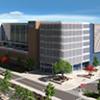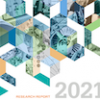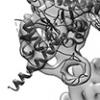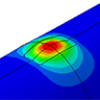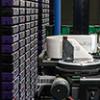Intel’s planned $20 billion investment presents new opportunities for the Ohio Supercomputer Center (OSC) to close the manufacturing skills gap in the state.
Press Releases
Primary tabs
The publication spotlights news from OSC and highlights the research and education enabled by Ohio’s statewide high performance computing resource.
Luiz Oliveira's undergraduate students use OSC's resources to explore the complex interactions of biomolecules and nanomaterials.
High performance computing enables Kent State students to render complex simulations more quickly, spending less time in the classroom waiting and more time learning.
Krishna Chinthalapudi's research into molecular motors requires the processing of large amounts of data. He and his team turn to the Ohio Supercomputer Center to turn days of computation into minutes.
The Ohio Supercomputer Center (OSC) and the Ohio Technology Consortium (OH-TECH) are saddened to learn of the passing of Charles Csuri, the "father of computer art." Chuck, as he was known, was a true pioneer with a remarkable talent for interdisciplinary work and a significant contributor to the creation and success of OSC and all that followed.
For more than 20 years, the Ohio Supercomputer Center (OSC) has been sponsoring the Young Women’s Summer Institute (YWSI) to engage Ohio’s middle school students in STEM education topics. Although the Center had planned to offer the week-long event in person in 2021, the ongoing COVID-19 pandemic prompted a pivot to an online format.
The Ohio Supercomputer Center (OSC) recently upgraded two services to allow clients to store more data at a faster rate and strengthen data backup.
TotalSim US, a computational fluid dynamics (CFD) consulting and solutions firm based in Dublin, Ohio, is helping the state of California certify fuel efficient and environmentally friendly tractor-trailers using resources provided by the Ohio Supercomputer Center (OSC).
